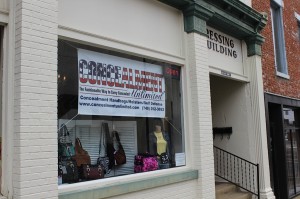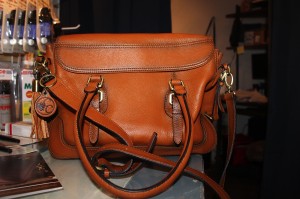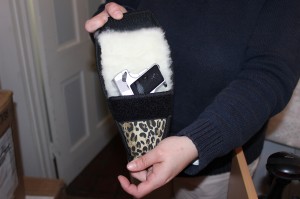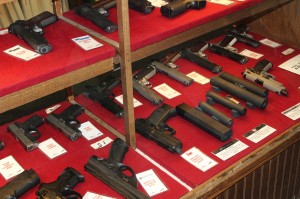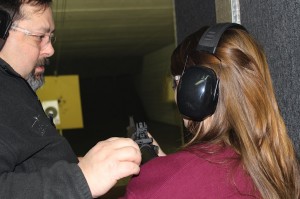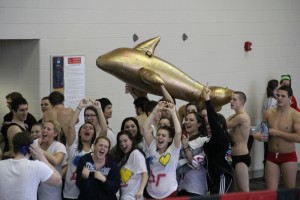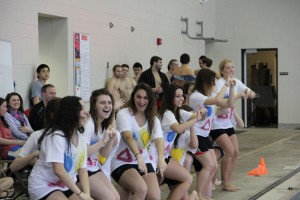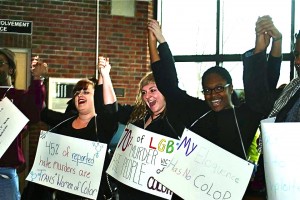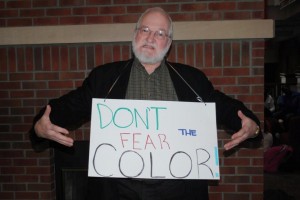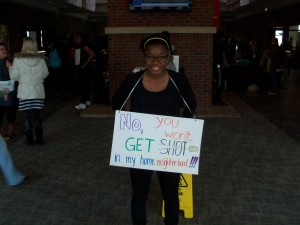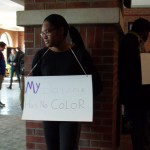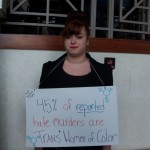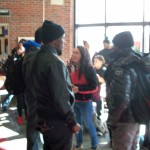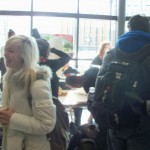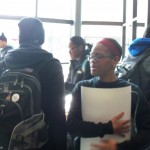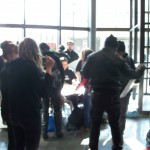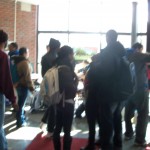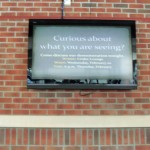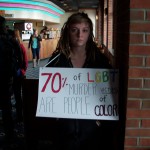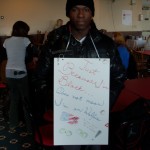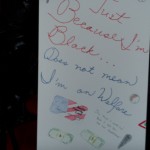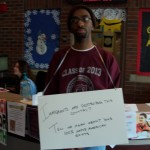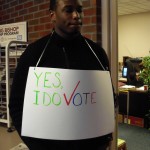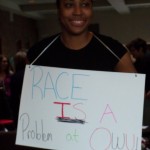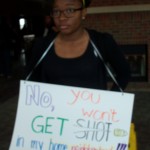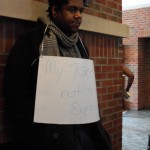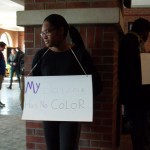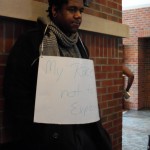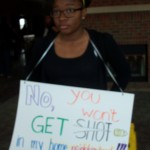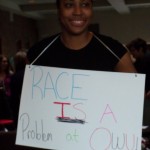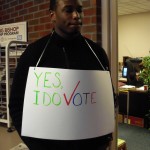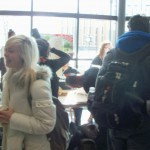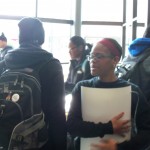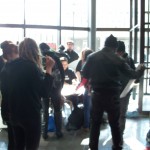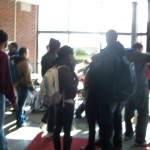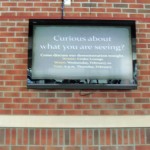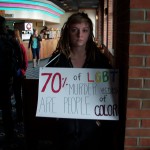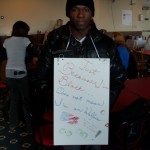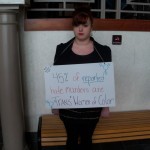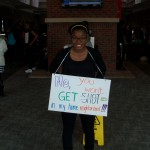By Elizabeth Childers
Managing Editor
On Dec. 2, 2010, Mike Swaim wrote a story for The Transcript about the possibility of a smoking ban on Ohio Wesleyan’s campus. “The Wesleyan Council of Student Affairs has proposed a policy that would potentially ban smoking on campus, beginning in the fall of 2013,” he wrote. Six days later, WCSA did pass a resolution to work towards having a smoke-free campus by 2013. Three years later, months away from this proposed ban on smoking, OWU students and faculty has seen little to no work done towards this transition. As a result, the current WCSA administration will not be pursuing the finalization of this resolution: OWU remains a campus that is not smoke or tobacco free.
The Birth of the Resolution
Kyle Herman, Class of 2011, was the WCSA president who spearheaded the project.
“When WCSA’s new Executive Committee examined student concerns in January 2010 and discussed them with the administration,” he said, “we found a common theme among our goals. We wanted to be more environmentally friendly, improve fitness facilities and work with Chartwells to provide healthier dining options. We were also working on reforms to fulfill our legal obligation of bringing OWU’s policies on alcohol and other drugs in line with best practices. It was out of the collection of these and related goals that the Healthy Bishop Initiative was formed to help OWU not only provide a healthier environment for its students, but to serve as an example to the rest of society.”
The country’s political climate of the time also revolved around health concerns, Herman recalled. One of the few things all parties could agree on was minimizing health care costs by promoting healthier living habits. Smoking on campus became a forerunning topic concerning student health when WCSA noticed complaints from students about secondhand smoke in high traffic areas as well as near residence halls.
“We adopted a goal of decreasing the harmful effects of secondhand smoke,” Herman said. “though at the time it was not clear how we could do that.”
Efforts made by WCSA included an education campaign about the need for smokers to stand a minimum of 20 feet away from buildings and moving cigarette receptacles to the appropriate distance. “But nothing changed except all the cigarette butts were thrown on the ground instead of into the dispensers,” he said.
Before fall semester 2010, Herman attended a workshop hosted by the Ohio Department of Health that focused on campus tobacco policies. “The federal government was offering grants to the states that had the most colleges commit to the growing trend of becoming tobacco-free campuses,” Herman recalled from this lecture. “College students are the youngest tobacco companies are legally allowed to target and they spend billions to manipulate our age group.”
Upon returning to school, WCSA narrowed their goal to protect nonsmokers from secondhand smoke as opposed to changing the lifestyles of students who used tobacco.
“Our attitude was that people have a right to harm themselves so long as they don’t harm others. Unfortunately, there is no safe level of secondhand smoke and nonsmokers were tired of being stuck in a smoke trail during the 10 minute walk to class down the JAYwalk or any time they went to the library,” Herman said.
In a survey done by his administration, it was discovered, at the time, 68.5 percent of students who responded were bothered by secondhand smoke while on campus. As a result, WCSA decided to focus on making OWU a smoke-free campus as opposed to a tobacco-free one.
“Student reactions were mixed,” Herman explained. “Although students were bothered by secondhand smoke, many were afraid of offending friends who chose to smoke.”
The opposition to a smoke-free campus led to a ‘town hall meeting’ to discuss openly with students plans to achieve the goal.
Junior Ariel Koiman, a former member of WCSA, was at this meeting.
“It’s actually how I got started (in WCSA),” Koiman said. “It was my participation at that meeting where people started coming up to me and saying, ‘Hey, you should do this.’”
Koiman recalled Herman’s opinions as not being popular among those who attended.
“There were plenty of people who turned up in the Bayley Room and they weren’t shutting him down or anything, but they were on the calm side of aggressive,” he said. “He had some valid points but I think the mass majority of people speaking out were those who found (the smoking ban) overbearing and excessive. I think people felt like they were trying to reason with him and he wasn’t extending that back.”
Herman also confirmed the opposition at this open meeting. “…Many of the participants were smokers who claimed they had a ‘right to smoke’ anywhere they wanted. Most members of WCSA still felt that the right to breathe clean air was more important than the privilege of smoking.”
As a result, WCSA held a non-binding referendum to see how the student body felt. A small portion of students participated – just over a third – and out of that, 37 percent supported a smoke-free campus, 58 percent were opposed and four percent were neutral.
“Because participation was so low and passion among a vocal minority so high, some members of WCSA felt that (the) opposition was over-represented by the referendum,” Herman said. “They saw their duty as representatives to promote the common good for the rights of the silent majority even if most students were apathetic.”
Some WCSA members were uncomfortable with passing a ban because “direct democracy would have opposed it.” There was also the issue, pending implementation, of students leaving campus at night in order to smoke. The result was a compromise where residential side of campus would adhere to a required distance away from buildings and public parts of campus such as the JAYwalk, academic side and sports fields would eventually transition to smoke-free areas, to be completed by 2013.
This resolution, passed Dec. 8, 2010, was in hope that after “WCSA requested on behalf of the student body that we transition most of the campus to smoke-free, the administration would prepare to implement it through the Healthy Bishop Initiative,” Herman said.
“This would require educating the university community, including current and prospective students, faculty, and staff, and ensuring access to resources to help with smoking cessation. Signs would be posted to notify visitors and it would be enforced like any other rule.”
We the People Ban Smoking
According to the American Nonsmokers’ Rights Foundation, as of Jan. 2, there are 1,129 smoke free campuses in the United States and of these 766 are completely tobacco-free. It’s statistics like this that fueled Herman’s initiative.
Dr. Kimberlie Goldsberry, dean of students and WCSA’s adviser, recalled the resolution passing, but wasn’t sure if there has been any significant work on it since.
“It did not say officially we are a smoke free campus on January 1, 2013,” she said. “I think it was more about working towards becoming (a smoke-free campus.).”
The original resolution states Ohio Wesleyan should:
• adopt a long-term goal of decreasing the negative effects of tobacco
• discourage smoking to promote responsibility and respect toward all members of the community
• educate students, faculty, and staff about the harms of voluntary and involuntary consumption of tobacco products
• ensure access to cessation support to help students and employees who smoke overcome their addictions and quit using tobacco
• transition to a smoke-free JAYWalk and Academic Side of campus (defined as all university property east of Liberty St. and south of Williams St.) beginning in the summer of 2013 and a smoke-free perimeter of 20 feet around all university buildings should be enforced in compliance with state law under Chapter 3794 of the Ohio Revised Code, and that enforcement of the 20-foot policy should include the erection of signs and the replacement of cigarette disposals to a distance of at least 20 feet from buildings.
After Herman’s administration passed the resolution, Koiman recalled the attitude during his first year on WCSA as: “It didn’t come up at all. I remember people wanted to avoid it…but it probably should have been addressed.”
Sharif Kronemer, Class of 2012, had been vice-president during Herman’s administration, was the next president of WCSA. “It (the smoking resolution) was a highly contentious debate when Kyle introduced it, but I thought an important discussion to have.”
Kronemer’s administration opted to focus on other issues of student health such as working with the Healthy Bishop Initiative, Chartwells, and the administration.
“I felt WCSA could make more of an immediate impact on the community’s health by introducing resolutions that were less controversial,” he said.
These resolutions included the 25K Challenge which brought the new aerobic equipment to the Welch Fitness Center and discussing Chartwell’s food options in an effort to bring healthier choices to campus.
“Ultimately, I think the biggest struggle for this resolution in the future will be on the faculty and staff end of things,” Kronemer said. “Because of the campus layout there may be difficulty negotiating where are suitable locations to smoke, while maintaining the safety of OWU community members.”
Issues with the Resolution
Sophomore Kyle Hendershot, WCSA member and head of student conduct, has been researching this resolution for WCSA.
“As of the end of this year, beginning August 2013, Ohio Wesleyan is supposed to be completely tobacco-free, not just smoke free,” he said. “The problem we’re having currently is apparently multiple conclusions were passed, and one was that they were going to work toward it; and one that was completely tobacco-free.”
The problem with these conclusions made by WCSA back in 2010 is the administration was from two years ago, and with college turnaround time being four years, just two years can make a significant difference. At that time, the students which now make up roughly half of the population did not attend school here. This can show drastic changes in the popular view of any issue, not just smoking.
“One of the conclusions that it (the resolution) came to was if we were going to implement this,” Hendershot said, “we were going to have to start promoting the fact we were going to be going tobacco free so that people who do use tobacco would have a chance to quit. That was never done. Another problem is if we tell the students they weren’t allowed to use tobacco, Health Services would have to supply Nicorette gum or patches of something like that to help students with the withdrawal effects.”
Hendershot pointed out the reason WCSA was passing resolutions on smoking in the first place is because they deal with student health as a whole, and student smoking and exposure to secondhand smoke falls under that category.
“When I brought (the smoking issue) back up,” he said, “they were like, ‘We don’t know what’s going on with that one.’ It got pushed to the side. There was a resolution passed, but then nothing was done about it.”
One of the pieces of the resolution passed stated students must comply with the state law of being 20 feet away from the door has yet to be added to the student handbook, which is updated every year. The current smoking policy simply states “Smoking is prohibited in all University buildings and areas immediately adjacent to doors and windows. (Ohio Revised Code Chapter 3794 – Smoking Ban).” The student handbook was last updated in July 2012.
Since the resolution was made, no signs have been posted about the smoking distance and little education has been offered to students about the upcoming changes.
Wendy Piper, director of Residential Life, said she was unaware if efforts have been made by the university to act upon the resolution.
“From a residential perspective, if concerns are brought to our attention we address them on a case by case basis,” she said. “The most common concern cited are related to the issues of secondhand smoke in proximity to residential locations. Typically Residential Life has worked with Public Safety to address individuals, or with Buildings & Grounds to relocate cigarette receptacles to appropriate locations.”
Goldsberry said an addition of clearing buildings by 20 feet isn’t just an OWU regulation, it a state law.
“You need to be 20 feet away from the building completely, not like outside Bashford…It needs to be across from the cars there, in the grass…It’s an issue of respect and safety.”
In regards to safety, the handbook and state law also prohibits all smoking within buildings. OWU saw the danger of a lit cigarette in dorms just last semester, when the Delaware Fire Department responded to the fraternity Delta Tau Delta due to a fire started by a cigarette. This resulted in the fraternity brothers being removed from their house at 20 Williams for several weeks while fire damage was repaired.
Instances of official complaints made to the university are rare. Both the Coordinator of Student Conduct, Michael Esler, and the Director of Public Safety, Robert Wood, said they found few complaints about secondhand smoke and smoking in unauthorized areas.
“We’ve got so many other things going on, it’s probably not the top of our priority list,” Wood said. “When we do get a complaint, those tend to be around the residence halls…It’s not a common call. I don’t ever recall writing a student up for conduct for that.”
Wood said enforcing smoking rules can be as problematic with employees as it is with students, like a story senior David Winnyk, a smoker, shared about a student who dropped a water balloon on the smoker below her window, only to discover it was an employee.
Esler does not receive reports about smoking directly. Rather, he is the person a student sees once there’s been a complaint filed or the student has been written up.
In the event a student is written up, on the first offense they generally have a sit down with an RLC for a conversation concerning why there are smoking rules and might be asked to view educational material (known as learning based sanction) about health and safety concerning smoking.
OWU, Esler said, prefers educational sanctions as opposed to fining the student. Offenses after that tend to also have a fine attached to them, along with the educational sanction.
“In terms of the number of cases that comes from Student Conduct,” Esler said, supporting Wood’s observation, “there aren’t very many at all.”
Junior Tim O’Keeffe, the current vice president of WCSA, said the resolution written in 2010 only reflected the beliefs of the WCSA administration at that time, and not the current WCSA’s view. He also said in order for this resolution to “officially” pass it would need to pass through faculty votes as well.
“And they (the faculty) have not to my knowledge even considered looking at this position,” he said.
O’Keeffe also said WCSA will not “carry out their (previous WCSA’s) vision of a tobacco free campus, and the student handbook will remain the same.”
Reactions and Compromise
“I just think it’s unfair…most people who smoke definitely do (think that), and even some who don’t,” Winnyk said. “Those who are for it probably don’t smoke.”
Winnyk said he remembered after the resolution was passed, the goal was set so far in the future, most opposed seemed to let the issue go.
“The only people who were active about it at the time were juniors and seniors, and it was so far off, they lost their aggression,” he said. “Now that it’s coming back, everyone is like, ‘Oh yeah, that’s a thing. We should probably do something about it.’”
Winnyk gives campus tours to prospective students and does occasionally get asked about smoking on campus while giving tours. The question often pops up an OWU student is seen smoking.
Winnyk’s father currently has lung cancer from smoking, and Winnyk is aware of the consequences of his habit. But, he tries to be preventative of any health issues that may arise, such as getting chest x-rays regularly.
Winnyk is a little skeptic of the anti-secondhand smoke information put out by STAND and other organizations. He believes their numbers don’t necessarily reflect the EPA studies that have been done.
Winnyk recalled a particular ad of a woman who had an artificial speech aide due to a larygectomy informing her audience in a telltale mechanical voice she never smoked a cigarette in her life.
“They’re just putting it out there, like it’s just some random woman who got cancer from secondhand smoke,” he said. “I don’t think it’s clear whether there’s a present danger…And those people who say, ‘Well, I have asthma and it offends me,’ I’m sure you also have the same problem with perfume because it’s a reflex thing, not actually the smoke: it’s the scent.”
Winnyk said his compromise would be a smoking area on one side of campus. Though he is a smoke walker (he smokes as he walks and rarely sits), he said he would be willing to give it up if it made other students more at ease.
Koiman, who is a nonsmoker, said having to deal with secondhand smoke is a minor thing.
“I hate having to hold my breath whenever I go out the door in Smith, which I always do because there are always to people smoking there: it’s an annoying thing, but you know,” he said.
Koiman offered a compromise, seeing it a term of locations available for smokers as opposed to a whole blanketed side of campus.
He’d offer making all walk ways smoke free as well as entrances. As a result, a smoker would simply need to step into the grass off of the JAY to smoke, not seek a new route altogether.
“I remember…Kyle’s (Herman) response (to the suggestion of smoking areas on campus) was at other schools, they became so filthy the cleaning staff refused so much as go there,” Koiman said. “Which I suppose is a valid point, but I still think something to that effect would be the most reasonable compromise.”
Hendershot pointed out even in the event of a campus ban of smoking, it would only affect the students, not necessarily the faculty and staff as well, which can cause issues.
If it came to a blanket ban on one side of campus such as the academic side, it would be difficult to enforce, and students would end up standing on Sandusky Street between classes in order to smoke.
Winnyk’s comment as he finished his own cigarette seemed to sum up the entire opposition to a smoking ban.
“You will never be able to prohibit people from doing something they find innocent pleasure in,” he said. “…People need these escapes from the world. Which isn’t a problem entirely, but if people need that relief more constantly is where addiction really starts, I think. That needs to be more carefully monitored than just saying, ‘No.’”

